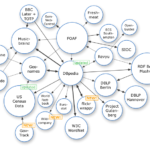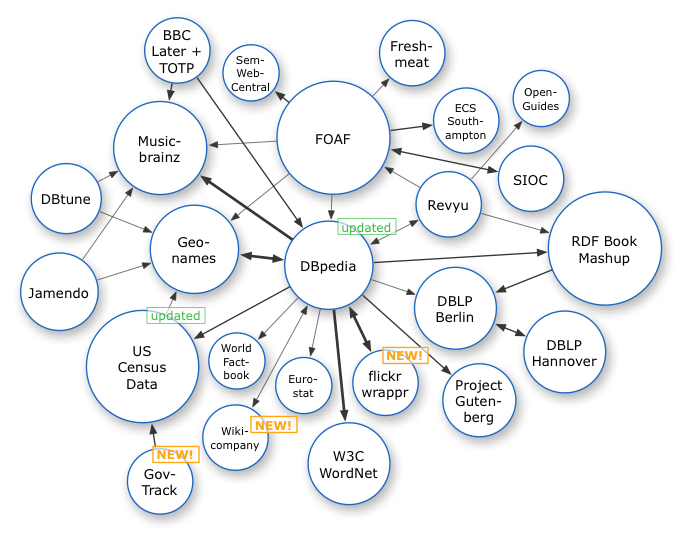Table of Contents
ToggleGeographic Data Analysis provides granular data on customer behaviors and location-based trends, enabling strategic, personalized marketing. Local SEO enhances online visibility in regional searches, leading to increased customer engagement and revenue. This dual approach ensures not only increased web traffic but the right kind of traffic. Mastering these tools allows businesses to accurately gauge their local market, strategically outpace competitors, and position themselves for success in the digital landscape. This article will provide an in-depth exploration of these critical digital marketing tools, their benefits, and their role in maintaining a competitive edge.
Key Takeaways
- Local SEO is essential for businesses to optimize their websites for relevant local searches and increase local visibility.
- Geographic data plays a crucial role in understanding local competition, market trends, and identifying potential areas of expansion.
- Data analysis in SEO helps businesses tailor their online presence according to user intent and geographical relevance, improving local search engine visibility and user experience.
- Utilizing tools like Google Analytics, Google Search Console, Ahrefs, and SEMrush can provide valuable insights into website performance and audience, enhancing local SEO strategies.
Understanding Local SEO
One must grasp the fundamental concept that local SEO is a strategic approach aimed at optimizing a website or online presence to attract more business from relevant local searches. This entails understanding the correlation between geographical data and search engine algorithms. Local SEO leverages the power of location-based searches, optimizing web content and metadata to enhance local visibility. An effective local SEO strategy can elevate a brand’s online presence, providing a competitive edge in a saturated digital market. The process involves meticulous keyword optimization, comprehensive business listings, user-generated reviews, and localized content creation. Utilizing sophisticated tools and analytics to track performance, local SEO allows businesses to target specific demographic regions, thereby increasing their local customer base and enhancing their digital footprint. It’s an indispensable tool in the tech-savvy entrepreneur’s arsenal.
Importance of Geographic Data
Pivoting from the principles of local SEO, the significance of geographic data emerges as a critical factor in optimizing local search engine results. This data, unequivocally, underpins the user’s search experience, shaping the results to align with location-based queries. When businesses harness this information effectively, they can create targeted marketing strategies, enhancing their online visibility to the local consumer pool. Notably, geographic data also facilitates the understanding of local competition and market trends, empowering businesses to make data-driven decisions. Furthermore, it aids in identifying potential areas of expansion, and facilitating growth strategies. As the digital age marches on, the role of geographic data in local SEO becomes even more prominent, underscoring its importance in the realm of digital marketing.
Basics of Data Analysis in SEO
In the realm of Local SEO, understanding the fundamentals of data analysis becomes indispensable for businesses to effectively leverage the wealth of geographic information at their disposal. Data analysis in SEO involves studying user behavior, market trends, and search engine algorithms. The primary goal is to use this information to optimize websites for better visibility, engagement, and rankings. Key components include keyword analysis, backlink evaluation, and user experience (UX) assessment. Mastery of these elements enables businesses to tailor their online presence according to user intent and geographical relevance. This analytical approach not only enhances local search engine visibility but also improves the overall user experience, leading to increased conversions and business growth.
Utilizing Geographic Data for Local SEO
‘With the aid of Geographic Data, businesses can significantly optimize their Local SEO strategies by accurately targeting specific demographics and regions.
- Local Keyword Optimization: Geographic data allows businesses to incorporate local keywords into their content, enhancing local search rankings.
- Regional Content Creation: By understanding the demographic data, businesses can tailor content to resonate with local audiences, boosting engagement rates.
- Localized Link Building: Geographic analysis enables businesses to identify local influencers and businesses for strategic partnerships, improving local link profiles.
- Geo-Targeted Pay-Per-Click campaigns: Using geographic data, businesses can run highly targeted PPC campaigns to maximize conversions in specific regions.
This data-driven approach ensures that your Local SEO efforts are not a shot in the dark but a targeted strategy to reach potential customers in the most effective manner.’
Tools for Local SEO and Data Analysis
The utilization of specific tools for Local SEO and data analysis can significantly enhance a business’s ability to effectively target and engage with their local demographic. Tools such as Google Analytics, Google Search Console, Ahrefs, and SEMrush provide valuable insights into a website’s performance and its audience. These tools can reveal patterns and trends in user behavior and can help to optimize a website for local search. For instance, Google Analytics can track user demographics and behavior, while Google Search Console can identify technical website issues affecting search ranking. Ahrefs and SEMrush, on the other hand, are capable of conducting comprehensive keyword research and competitor analysis. These tools, when used adeptly, can significantly improve local SEO strategies and contribute to a business’s local visibility.
Enhancing Local Search Ranking
Effective local search ranking optimization, a crucial component of Local SEO, requires a strategic approach to geographic data analysis and the diligent application of insights gleaned from this process.
- Optimize your online presence: Ensure your business information is consistent across all online platforms, including your website, social media, and online directories.
- Generate local content: Regularly produce content that is relevant to your local audience. This not only boosts your visibility but also positions you as a local authority.
- Leverage online reviews: Encourage customers to share their experiences online. Positive reviews boost your local reputation and improve your search ranking.
- Use location-specific keywords: Incorporate keywords that reflect your location in your content and metadata. This helps search engines identify your business as locally relevant.
Implement these strategies diligently for a robust local SEO campaign.
The Role of Google My Business
Leveraging Google My Business plays a pivotal role in enhancing local SEO and conducting effective geographic data analysis. It provides a platform for businesses to list their services, operating hours, and geographical location, thus making them visible and accessible to potential customers in their vicinity.
Here’s an analytical view of the Google My Business functionalities:
| Functionality | Description | Benefits |
|---|---|---|
| Business Profile | Provides detailed information about the business | Increases visibility and credibility |
| Insights | Provides data on customer engagement | Helps in strategy planning |
| Reviews | Platform for customer feedback | Enhances reputation and trustworthiness |
Analyzing Local Competition
Building on the insights gained from Google My Business, an in-depth analysis of local competition becomes a key step in fine-tuning your local SEO strategy. To effectively perform this analysis, a four-step process could be employed:
- Identify Competitors: Start by identifying businesses offering similar services in your area. Use Google Maps to find these businesses and note their names and locations.
- Analyze Competitors’ SEO: Check the SEO performance of these businesses. Examine their keyword usage, metadata, and backlink profiles.
- Review Online Presence: Assess their online presence, including social media platforms, review sites, and their overall online reputation.
- Evaluate Content: Examine the quality of their content, their posting frequency, and engagement rates.
This rigorous analysis will provide valuable insights, helping you to optimize your local SEO strategy and gain a competitive edge.
Case Study: Successful Local SEO Strategies
While analyzing the competition provides crucial insights, implementing these findings into successful local SEO strategies can be illuminated further through a case study. Taking a local restaurant as an example, they capitalized on their location data to optimize their online presence. First, they ensured their business listing was accurate and consistent across all platforms. They then leveraged Google My Business to facilitate reviews, bolstering their online reputation. Additionally, they incorporated local keywords into their website content, enhancing their relevance to the local audience. They also engaged with their community via social media, fostering a loyal customer base. This strategic multichannel approach led to a significant increase in local visibility, demonstrating the efficacy of a well-executed local SEO strategy.
Leveraging Social Media for Local SEO
Expanding on the multichannel approach, the use of social media platforms emerges as a critical factor in enhancing local SEO efforts. In this digital age, social media serves as a bridge between businesses and their local audience.
- Create Localized Content: Crafting content that resonates with the local audience boosts engagement, promoting organic reach and visibility on search engines.
- Engage with Local Influencers: Collaboration with local influencers can improve brand recognition and local relevance.
- Optimize Social Profiles for Local Search: Incorporating local keywords and geo-targeted information can enhance your business’s visibility in local search results.
- Encourage Customer Reviews: Positive customer reviews on social platforms can significantly enhance local SEO by influencing search engine algorithms to favor your business in local searches.
Future Trends in Local SEO
How will the evolution of technology and user behavior shape the future trends in local SEO? As voice search becomes increasingly prevalent, local SEO will need to adapt to this shift, prioritizing conversational keyword phrases that align with natural speech patterns. Additionally, Google’s growing emphasis on user experience signals a trend towards more personalized search results, necessitating a more nuanced understanding of local target audiences. The rise of mobile technology will also continue to impact local SEO, as search engines prioritize mobile-friendly sites and users increasingly search ‘near me’. Lastly, the integration of AI in search algorithms could lead to more dynamic, real-time SEO strategies, leveraging data analytics to understand and respond to user behavior in unprecedented ways.
Best Practices in Local SEO and Geographic Data Analysis
Why is it crucial to implement best practices in local SEO and Geographic Data Analysis for enhancing business visibility online? It’s because these practices optimize your online presence to target local consumers effectively. Here are the top four best practices:
- Keyword Optimization: Incorporate location-specific keywords into your content, meta tags, and URLs. This enhances your site’s relevance for local searches.
- Google My Business: Leverage this free tool to manage your online presence across Google, including Search and Maps. Keep your listing updated with the correct information.
- Local Link Building: Establish relationships with local businesses and influencers for quality backlinks. This helps improve your site’s authority and search engine ranking.
- Online Reviews: Encourage customer reviews on your site and third-party platforms. Positive reviews boost your business’s online reputation and visibility.
Frequently Asked Questions
What Are Some Uncommon Challenges Faced in Local SEO and How Can They Be Resolved?
Uncommon challenges may include dynamic SERP features and competition density. Resolutions can involve focusing on unique local content, niche-specific optimization, and continuous monitoring of search engine result page (SERP) trends and competitor activities.
Can You Provide Examples of Failures in Geographic Data Analysis and How Such Situations Can Be Avoided?
Failures in geographic data analysis can occur due to incorrect data input, improper tool usage, or misinterpretation of results. Mitigation involves meticulous data validation, comprehensive tool training, and robust interpretation frameworks to ensure accuracy.
What Are Some Lesser-Known Tools That Can Be Used for Local SEO and Data Analysis?
Lesser-known tools for data analysis include KNIME for data prep and modeling, OpenRefine for data cleaning, and Orange for visual programming. For SEO, consider Nightwatch, Serpstat, and cognitiveSEO for comprehensive search optimization features.
Can You Discuss the Potential Impact of Emerging Technologies, Like AI, on the Future of Local Seo?
Emerging technologies like AI have the potential to revolutionize many sectors, including SEO. They can automate content optimization, improve accuracy in keyword research, and provide real-time personalization, potentially transforming the SEO landscape.
Are There Any Unique Strategies for Leveraging Social Media Platforms Beyond Facebook and Twitter for Local Seo?
Unique strategies for leveraging social media platforms beyond Facebook and Twitter involve optimizing content for platform-specific algorithms, engaging with niche communities, and utilizing geo-tagging features for location-specific visibility and interaction.
Conclusion
In conclusion, the utilization of Local SEO and Geographic Data Analysis is instrumental for businesses aiming to thrive in the digital era. These tools offer significant benefits such as targeted marketing, enhanced customer reach, and improved revenue generation. By understanding their local market and strategically positioning themselves, businesses can gain a competitive edge. As the digital landscape continues to evolve, the mastery of these techniques will become increasingly vital for business success.












